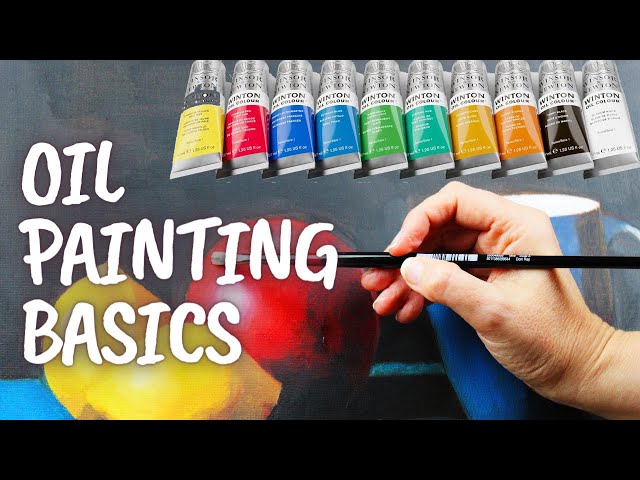Your cart is currently empty!

Starting your journey into oil painting can feel overwhelming — the brushes, the colors, the techniques. But like any craft, mastering oil painting fundamentals comes from consistent, thoughtful practice. Whether you’re holding a brush for the first time or returning to painting after a long break, building a strong foundation is the key to unlocking your creative expression.
In this blog post, we’ll guide you through a progressive practice routine for beginners, beginning with simple exercises and gradually introducing more complex elements. We’ll also explore insights from personal experience and stories of famous artists to show that every great oil painter started with the basics.
🖌️ Where to Begin: The First Strokes Matter
Step 1: Practice Straight and Curved Lines
Before you jump into painting landscapes or portraits, start by mastering the control of your brush. Use your oil brush to paint straight horizontal and vertical lines, then practice sweeping curved lines and circles.
This helps develop:
- Hand-eye coordination
- Steady brush control
- Confidence with brush pressure
💡 Tip: Use thinned oil paint for these exercises to reduce resistance on the canvas.
🎯 Step 2: Explore Shapes and Composition
Once your lines feel confident, begin practicing basic shapes like:
- Squares
- Triangles
- Spheres
- Cylinders
This builds your understanding of composition, spatial awareness, and form. Try arranging shapes into small still life compositions to develop your eye for layout and proportion.
📌 Fun Fact: Even Leonardo da Vinci started by sketching basic geometric forms before developing his masterpieces.
🎨 Step 3: Learn Color Mixing and Value Scales
Oil painting is deeply tied to color theory. Start with the primary colors (red, yellow, and blue) and experiment mixing them to create secondary and tertiary tones. Create a value scale using black and white to understand light and shadow.
Practice:
- Mixing skin tones
- Creating warm vs cool shades
- Blending smoothly between values
💡 Claude Monet famously painted the same haystacks at different times of day to study color and light variation — a valuable lesson for beginners!
🏞️ Step 4: Paint Simple Still Life and Landscapes
Now that you’re comfortable with lines, shapes, and color, you’re ready to start simple oil painting subjects. Begin with:
- A single fruit on a table
- A coffee mug and a spoon
- A quiet landscape with a horizon and sky
Keep the color palette limited and focus on capturing light and shadow, not perfection. This is the phase where many students fall in love with painting.
✍️ Step 5: Create Your Own Small Projects
The best way to grow is to create. Set weekly or monthly goals such as:
- Painting your favorite flower
- Recreating a master’s work
- Exploring abstract brushstroke patterns
This gives structure to your practice and brings joyful purpose to every painting session.
💬 Personal Experience: My First Breakthrough
When I first started oil painting, I couldn’t even control the brush for a clean curve. I spent two weeks just practicing circles and straight lines. It felt slow… until one day, I painted an apple that actually looked like an apple.
That moment of progress was unforgettable — and that’s the beauty of learning oil painting. It’s not about rushing, it’s about growing with every stroke.
🧠 Final Thoughts: Art is a Journey, Not a Race
Pablo Picasso once said, “Every child is an artist. The problem is how to remain an artist once we grow up.” Practicing oil painting basics is how we reconnect with that inner artist. With time, patience, and joy, you’ll build skills that bring your visions to life.
Whether you’re working with textures, color harmonies, or light and shadow, every masterpiece begins with mastering the basics.